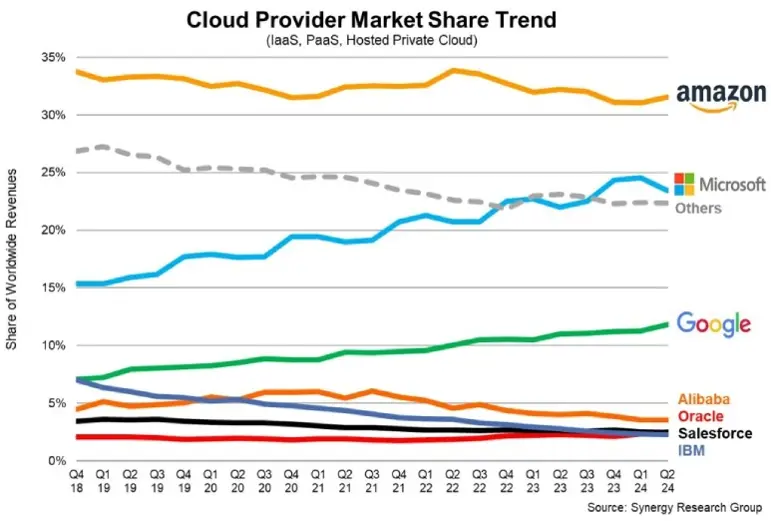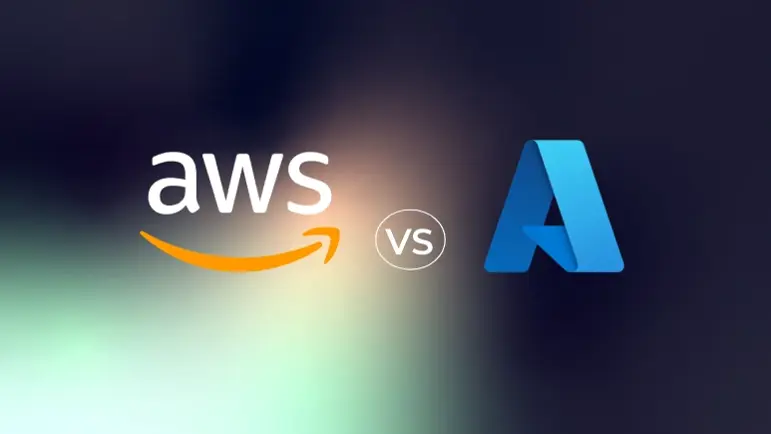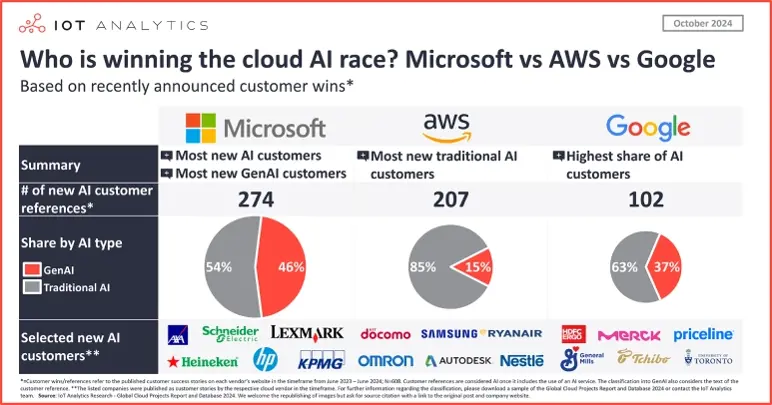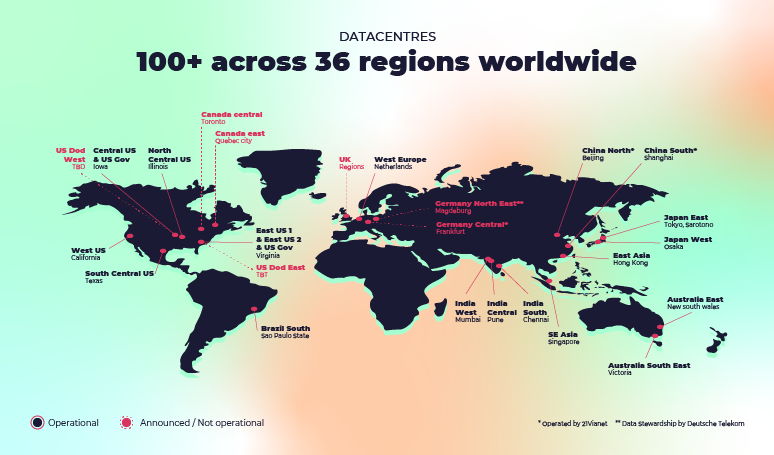Scalability
- Azure: Azure VMs handle autoscaling with Virtual Machine Scale Sets (VMSS). Similar to AWS, it scales based on demand or set schedules and responds to performance metrics like CPU or network usage.
- AWS: AWS uses Auto Scaling to automatically adjust resources like EC2 instances, ECS tasks, or DynamoDB capacity based on usage. It reacts to metrics like CPU load or network traffic and scales up or down without manual intervention.
Both offer similar automation, but AWS Auto Scaling tends to be more flexible across more service types. Azure VMSS is more focused on virtual machines and works best when tightly integrated with other Azure services.
Hybrid Cloud
A hybrid cloud setup blends on-prem data centres with public cloud, enabling integration of apps/data across both.
Both cloud service providers enable hybrid cloud:
- Azure:
- Azure Stack brings Azure services on-prem—extensions of the cloud deployed on local hardware.
- Azure Arc extends Azure’s management/control plane to on-prem, edge, and multi-cloud resources.
- AWS:
- AWS Outposts delivers AWS hardware and services on-prem, fully managed, ideal for low-latency, region-specific workloads.
- Works seamlessly with AWS APIs, IAM, CloudWatch, etc., but is AWS-centric and hardware-dependent.
In general, Azure is known for excelling in hybrid cloud setups, as it was mainly built with hybrid in mind. Deep integration with Microsoft tools makes identity (EntraID), security (Defender, Sentinel), and policy unified across environments in Azure.
Microsoft Azure is widely recognised as the market leader in hybrid architectures. AWS offers hybrid options too, but Azure is more mature and tightly integrated.
Performance
For most workloads, AWS and Azure deliver comparable performance across compute, storage, and networking. Differences are generally minimal for standard enterprise applications.
In reality, the architecture and workload optimisation (instance type, storage tiering, network configuration) matter more than the provider itself. In specialised scenarios, such as HPC, GPU-heavy workloads, or ultra-low-latency networking, specific services or configurations may tip the balance toward one provider.
Integrations
Both Azure and AWS provide solid integration capabilities, but with different strengths:
- Azure: Azure offers tight integration across its ecosystem, especially for organizations already using Microsoft 365, Teams, or Entra ID. Services like Azure DevOps, Pipelines, and Microsoft Graph API simplify identity-based and workflow automation within Microsoft environments.
- AWS: While not as Microsoft-centric, AWS offers deep integration through services like AWS SDKs, API Gateway, EventBridge, CodePipeline, and CloudFormation, supporting complex multi-service architectures.
If you want everything in a single pane of glass, Microsoft Azure is your best bet, with its unified, Microsoft-aligned stack.
AWS, however, excels in modular, API-first architectures, giving you broad flexibility to mix native and third-party tools.
Learning Curve
If you are about to start in cloud computing, you probably want to know: “Which is easier to learn: AWS or Azure?”. Opinions are divided, as it often comes down to personal preference, experience, learning style and the use-cases:
- In case you’re coming from a Microsoft background, it could be really easier for you to onboard on Microsoft Azure.
- On the other hand, if you start from scratch, AWS tends to be more intuitive and flexible.
One thing is sure: the more you do in one, the easier it becomes.
The great thing is that these cloud providers offer free accounts that allow you to learn and explore all these services. Microsoft Azure and AWS both grant credits worth $200. Try the cloud platforms for yourself and maximise the free credits to see which one you find easier!
Usability
Naming of products and services
Microsoft Azure makes life easier than AWS. Let’s explain.
Amazon likes to give its services unique names, which most of the time means it’s a real challenge to tell by the name what a service is all about. Think about the well-known compute service: EC2 (Elastic Compute 2). In essence, it’s nothing more than a virtual machine (VM).
It seems Amazon prefers to keep stuff out-of-the-box and fancy instead of user-friendly. While it’s not a big dealbreaker, it’s worth taking into account.
Resource groups
Furthermore, resource groups (to group resources) is available in Azure, whereas the same is not true for AKS. Instead, you must tag all resources. If you don’t, it becomes hard to find them later. And even when you do tag them, you have to search by tag, which isn’t intuitive.
In contrast, with resource groups (like in Azure), everything related is bundled together:
- Want to delete them all? Then you only have to delete the group.
- Want to view them? Simply opening the group will suffice, as it's user-friendly and straightforward.
Console
AWS has a powerful but often overwhelming web console. It’s customizable and has many features, but beginners may struggle with navigation. Azure’s console is more intuitive, with cleaner navigation, though it’s more centred around Microsoft products.
Support, Documentation and Community
- Azure: Azure has a good support system, especially if you’re already using Microsoft products. Their integration with tools like Entra ID (Active Directory) and Office 365 makes things smoother for Microsoft users, and their support for hybrid cloud setups is pretty solid too. Azure has a good community and lots of resources. It might not have the same depth as AWS when it comes to third‑party content, but Microsoft offers good enterprise‑level support options.
- AWS: AWS is known for having a massive community and extensive documentation, as it has been around the longest. There’s a ton of tutorials, forums, articles, and even third‑party resources to help you out. If you encounter an issue, you’ll likely find a guide or answer online fairly quickly. They also offer premium support plans that give access to AWS experts who can help with specific issues.
AWS vs Azure: Service Level Agreements (SLA)
An SLA (Service Level Agreement) defines the guaranteed uptime and availability the commitments for individual cloud services.
AWS offers two levels of uptime guarantees for EC2:
- Region-level SLA: If you deploy EC2 instances across two or more Availability Zones in a region, AWS provides a 99.99% uptime SLA.
- Instance-level SLA: For individual EC2 instances, AWS guarantees 99.5% uptime.
If these thresholds aren’t met, AWS provides service credits ranging from 10% to 100%, depending on the level of downtime.
Azure matches this with its own SLAs:
- Virtual Machines: Azure provides up to 99.99% uptime for VMs spread across Availability Zones.
- Single-instance VMs with premium storage: 99.9% SLA.
- Multiple-instance VMs in the same availability set: 99.95% SLA.
Both providers offer strong availability, whereas Azure’s SLAs vary by deployment configuration, while AWS defines SLAs more clearly at both region and instance levels.
Pricing: Which is cheaper?
When selecting a cloud provider, pricing is a crucial factor that impacts your budget for cloud resources. AWS and Azure follow a pay-as-you-go approach, and although Microsoft claims you pay less with Azure than with AWS, in reality, the costs for computing power, storage, and data transfer, as well as the discounts, differ between the providers.
- Azure: Offers pricing on a pay-as-you-go basis, Azure Reservations on VMs for long-term savings (1-3 years), storage cost based on usage, and discounts as well through the Azure Hybrid Benefit program or with Azure Spot VMs.
- AWS: Provides you with flexible costs, various computing instances, and storage pricing based on data stored and accessed. You also have discounts available with upfront payments.
The downside of AWS is that its pricing can be more complex, mainly due to its wide range of services. Not only that, but if you want to see how much you’re paying (such as individual VM costs), it requires enabling resource-level granularity via AWS Cost Explorer, which incurs an additional cost.
In Azure, on the other hand, you can actually see all of your costs for free through the Azure Portal or API. However, Azure pricing isn’t as easy, either.
Additionally, you can utilise cost management tools to calculate the costs associated with workloads across various cloud computing services, such as the AWS pricing calculator and the Azure Pricing Calculator.
Azure vs AWS Head-to-Head Comparison
| Criteria |
AWS |
Azure |
| Number of data centres |
150+ data centres |
400+ data centres |
| Number of regions |
70+ regions |
37+ regions |
| Number of services |
200+ services |
600+ services |
| Pricing model |
Pay-as-you-go, Savings Plans, Reserved Instances |
Pay-as-you-go, Savings Plans, Reserved Instance |
| Storage |
S3, EBS, EFS, Aurora Glacier |
Azure Blob Storage, Azure Files, Queue Storage, Disk Storage and Archive Storage |
| Databases |
Aurora, RDS, DynamoDB |
Cosmos DB, SQL Database |
| DevOps Tools |
CodePipeline, CodeDeploy |
Azure DevOps, GitHub |
| Hybrid Cloud |
AWS Outposts |
Azure Arc, Azure Stack |
| Monitoring |
CloudWatch |
Azure Monitor |
| Compute |
EC2 |
Azure VMs |
| Serverless |
AWS Lambda |
Azure Functions |
| Integrations |
Broad third-party support |
Deep Microsoft ecosystem integration |
| Migration tools |
AWS Migration Hub |
Azure Migrate |
Which industries prefer AWS or Azure?
The table below breaks down which sector prefers one or other:
| Sector |
AWS |
Azure |
| Financial services |
Widely adopted by major banks and financial firms |
Equally strong presence, especially in Microsoft-based environments |
| Healthcare |
Present but not the first choice |
Strong adoption due to compliance and Microsoft integration |
| Retail & E-commerce |
Dominant provider for global retail platforms |
Smaller share; used in Microsoft-heavy environments |
| Media & Entertainment |
Leads with major platforms like Netflix, Disney+, Hulu |
Used for enterprise media workflows, but not dominant in streaming |
| Government |
Secured significant contracts; adoption varies by country |
Strongest share |
| AI, Data, ML |
Strong for custom ML and scalable workflows |
Leading in AI, and often selected for enterprise data use and Microsoft data stack alignment |
- AWS dominates in startups, technology, e-commerce, and gaming because of its wide range of services.
- Azure is preferred in government, healthcare, finance, and enterprises that already use Microsoft products.
Azure vs AWS: Which is Better?
In the end, asking: “Azure vs AWS: which is better?” was the wrong question.
In reality, companies don’t choose their cloud providers based on which one is “better.” It’s a commercial decision, driven by many factors.
Instead, ask: “Which one should you choose when?”. Choosing between AWS and Azure comes down to your needs, your budget, use case, current setup, and application complexity.
AWS and Azure provide robust cloud platforms that support a diverse range of business requirements. Each has its distinct strengths and fits different use cases:
When to choose Azure?
- Azure is a better fit for enterprises already invested in Microsoft products. It integrates tightly with tools like Entra ID, SQL Server, and Office 365.
- When you require strict security and compliance needs (e.g. Azure’s industry certifications like HITRUST and FedRAMP High make it well-suited for healthcare and government workloads).
- Azure also excels in hybrid cloud solutions. This is particularly helpful if you’ve legacy systems or compliance restrictions that prevent a full leap into the public cloud.
- It’s a strong fit for hybrid cloud deployments, enterprise applications, compliance-heavy environments, .NET developments, and offers deep integration with Microsoft’s security, identity, and governance tools.
When to choose AWS?
- AWS is the oldest and most experienced cloud provider, so it's a solid choice if you prefer the most mature ecosystem.
- AWS is considered ideal for startups, large enterprises, and teams with diverse workloads.
- With the broadest feature set and strong third-party support, AWS is a solid choice.
- It has a wide global community and a strong support network, and it's great for high-scale data processing.
However, you don't have to always pick one. Many companies run both AWS and Azure in a multi-cloud setup. This approach helps avoid vendor lock-in, spread risks and lets teams choose the best service for each workload.
In fact, many AWS customers are also using Azure nowadays.










